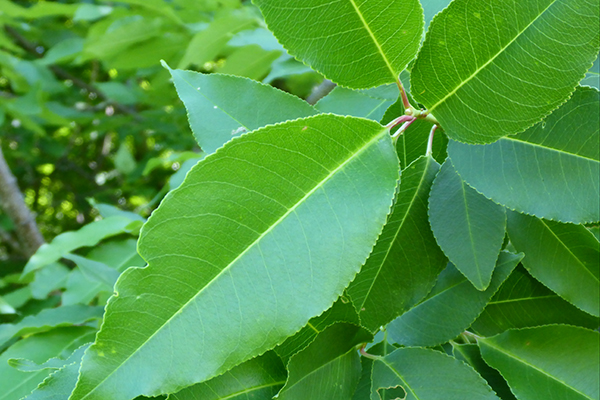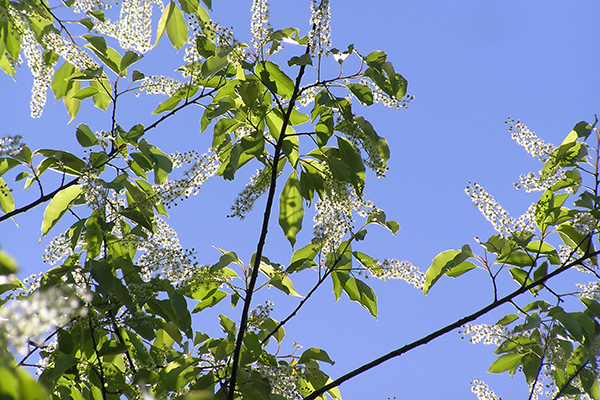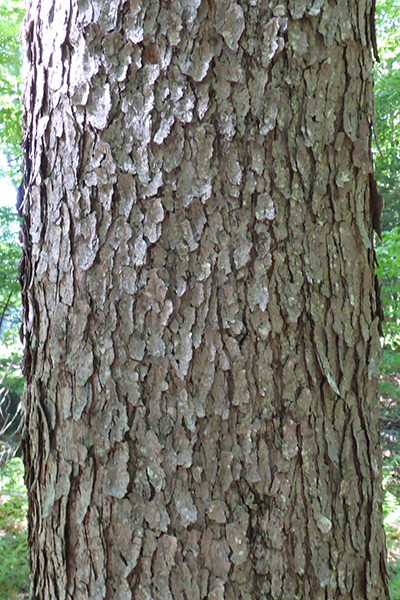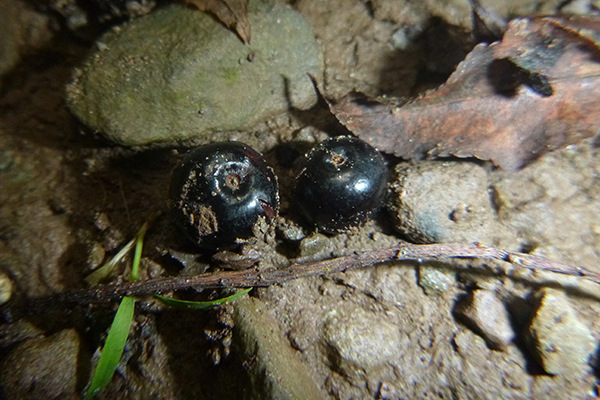When summer turns to fall, keep an eye on the ground underneath your black cherry trees. Why? Because this time of year black cherries are ripe, delicious, and ready to eat.
When summer turns to fall, keep an eye on the ground underneath your black cherry trees. Why? Because this time of year black cherries are ripe, delicious, and ready to eat.
But before you start picking berries off the ground, let’s talk about how to identify black cherry trees. Whenever you go for any wild edible, you should be absolutely certain of your identification. Never eat anything wild unless you’re sure you know what it is and that it’s safe.
To identify black cherry, look for leaves with a uniform serrated edge. Also check the leaf’s underside, which will have distinctive white or orange hairs down the center.

In the spring, you can identify black cherry by its clusters of white flowers.

And any time of year, you can spot black cherry by its distinctive “burnt potato chip” bark.

If living twigs are within reach, then you can experience the “bitter almond” smell found underneath the bark. This smell is actually cyanide, but don’t worry, it’s a harmless dose. Just remember that the only edible part of a black cherry are the fruits themselves.
Now that you know how to identify a black cherry, we can talk about the good stuff. Black cherries taste like, well, cherries. They’re small – about the size of a blueberry – and they have a dark reddish or purplish color.

You can eat black cherries raw without any preparation, though it doesn’t hurt to wash them before eating if they’re dirty like the one in the picture above. They have a small, hard pit that I choose to spit out. Who knows, maybe it’ll grow into a tree someday!
More than people find black cherries tasty. These little fruits are a wildlife favorite, so you can expect some wildlife sightings near your cherries if you’re quiet and have time to spare.
If you can’t always be out at your cherry trees looking for wildlife, you can still spot wildlife remotely. Try installing a trail camera near a group of cherries, and you’ll likely get some great images of wildlife on your land.





